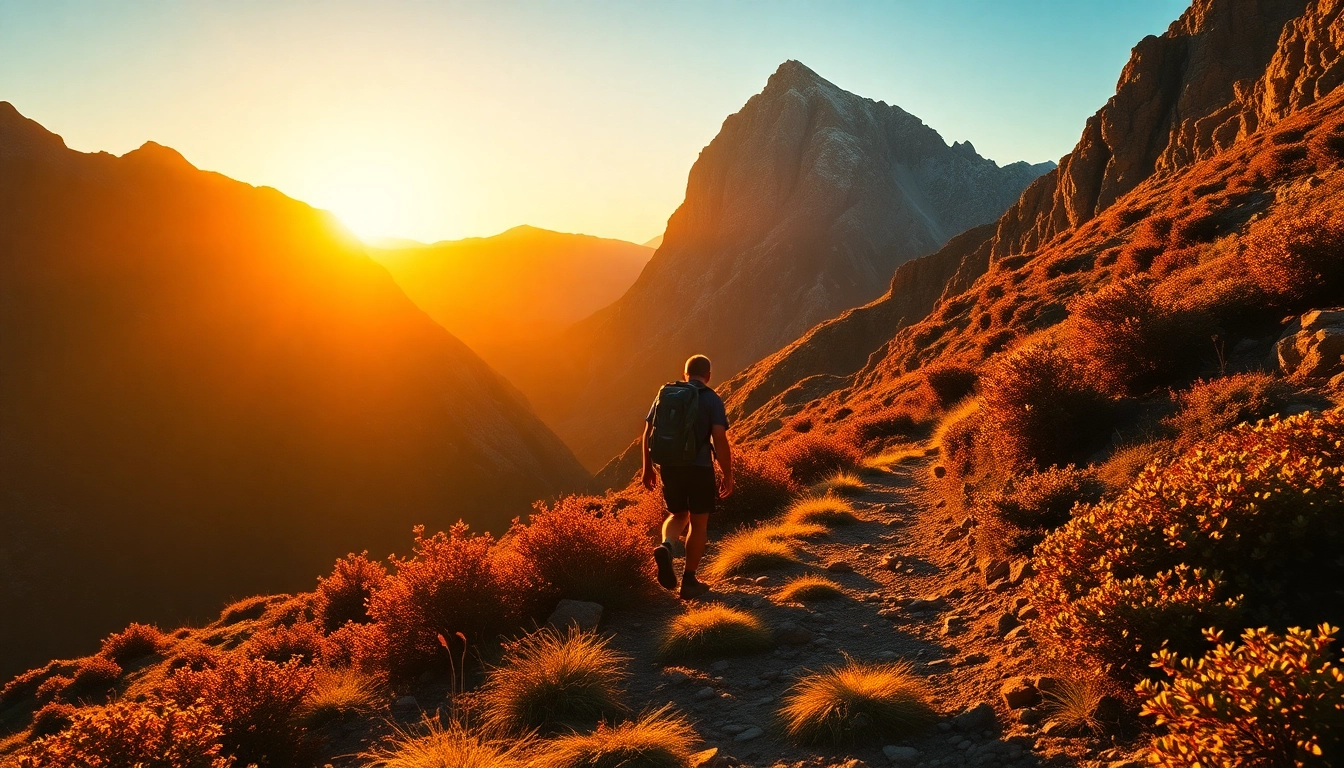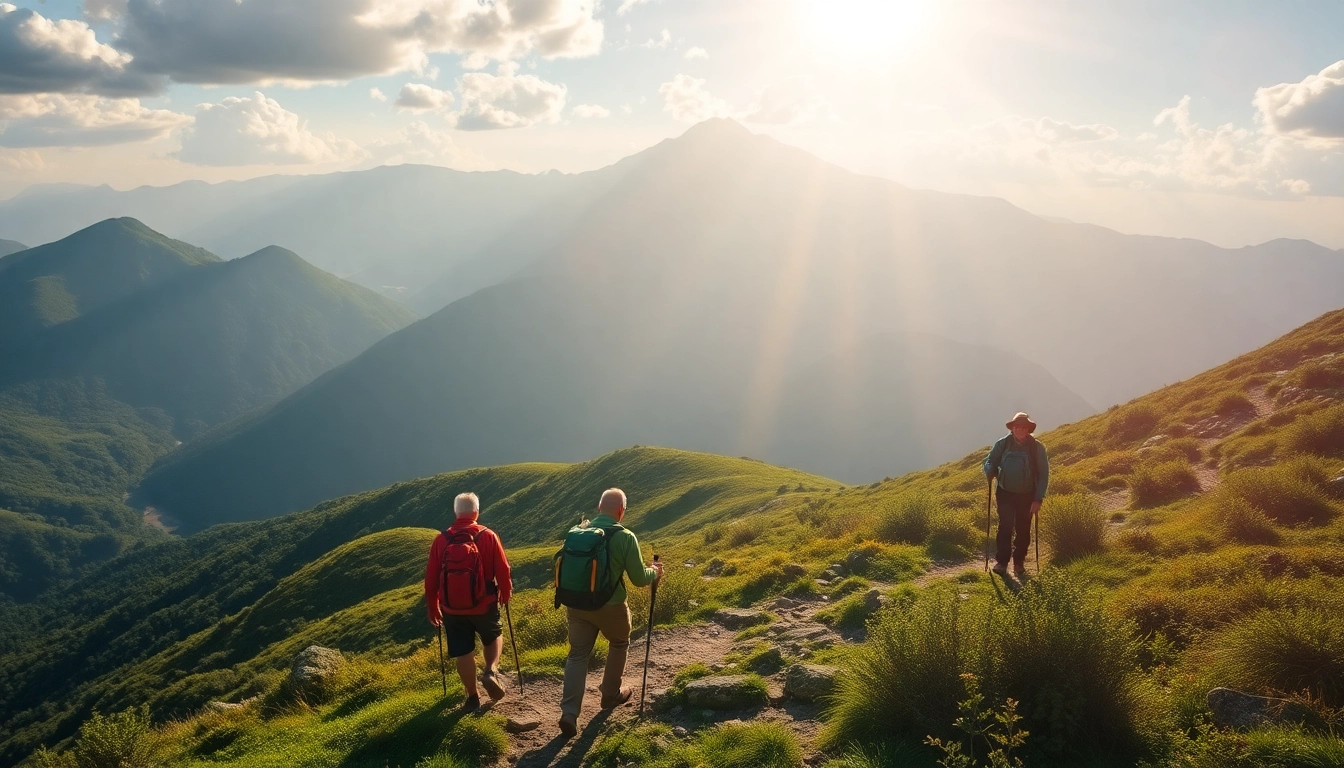Introduction to Trekking in Indonesia
Indonesia, an archipelago rich in diverse landscapes, offers a spectacular environment for outdoor enthusiasts seeking adventure through trekking. From towering volcanoes and lush rainforests to pristine beaches and mountain ranges, Indonesia’s treks are renowned for their natural beauty and cultural richness. Trekking in this country is not merely about physical activity; it is a journey into the heart of Indonesia’s vibrant biodiversity and traditional cultures. Whether you’re a seasoned trekker or a beginner venturing into outdoor exploration, Indonesia provides an extraordinary playground that challenges and rewards at every turn.
Understanding what sets Indonesian trekking destinations apart is crucial for planning an unforgettable adventure. The country’s diverse geography allows trekkers to experience varied terrains, from volcanic landscapes to tropical forests, each with its unique charm. Moreover, Indonesian trekking routes often involve interacting with local communities, offering cultural insights and authentic experiences that are hard to find elsewhere. As trekking continues to grow in popularity, it’s essential to grasp the fundamentals of this activity and appreciate the numerous benefits it offers—from physical health improvements to mental well-being and environmental awareness.
What sets Indonesian trekking destinations apart?
Indonesia’s trekking destinations are distinguished by their extraordinary diversity and natural grandeur. Unlike many countries where trekking might be confined to specific mountain ranges, Indonesia offers a panorama of environments that appeal to different interests and skill levels.
- Volcanic Landscapes: Indonesia, known as the “Ring of Fire,” is home to over 130 active volcanoes. Trekking volcanic peaks such as Mount Rinjani and Mount Semeru delivers an adrenaline rush and awe-inspiring views. These treks often involve nighttime ascents, lava fields, and crater lakes, presenting challenges and sights unique to volcanic terrains.
- Rainforests and Wildlife: The extensive rainforests of West Bali National Park and Gunung Leuser offer treks through dense greenery, home to orangutans, tigers, and diverse bird species. These routes promote ecological awareness and conservation efforts.
- Cultural Encounters: Trekking routes sometimes pass through traditional villages, allowing trekkers to experience local customs, cuisine, and rituals, enriching the journey beyond just nature’s beauty.
- Secluded Beaches and Coastal Trails: Some adventures include trekking along untouched coastlines, combining hiking with beach activities—ideal for half-day hikes or multi-day expeditions for the more adventurous.
These distinctive features, combined with Indonesia’s warm hospitality, make trekking here an enriching and diverse activity that appeals to travelers worldwide.
Understanding the Fundamentals of Trekking and Its Benefits
Defining Trekking
Trekking is a vigorous, long-distance walk through natural environments, often extending over several days. Unlike casual hiking, trekking typically involves navigating rugged terrains, such as mountains, forests, or remote regions, demanding physical endurance, mental resilience, and proper planning. This activity is focused on exploration, adventure, and connecting with nature in a profound way.
Key Characteristics of Trekking vs Hiking
While the terms are frequently used interchangeably, they have distinct meanings. Hiking generally refers to shorter, recreational walks on established trails, often within easier terrains suitable for casual outdoor activity. In contrast, trekking involves sustained journeys through more challenging terrains, requiring additional preparation, endurance, and often, multi-day commitments. According to [Cambridge Dictionary](https://dictionary.cambridge.org/dictionary/english/trekking), trekking is “the activity of walking long distances on foot for pleasure.” It is an activity that pushes physical boundaries and offers a sense of achievement upon completion.
Health and Psychological Benefits
Engaging in trekking offers numerous health benefits. Physically, it enhances cardiovascular fitness, muscular strength, and endurance. The varied terrain stimulates different muscle groups, improving overall physical health. Psychologically, trekking fosters mental resilience, reduces stress, and boosts mood through exposure to natural environments and the accomplishment of challenging goals.
In Indonesia’s context, trekking also encourages environmental stewardship and local community engagement. Trekking can serve as a sustainable tourism model, promoting conservation while providing economic opportunities for local residents.
Popular Trekking Activities Suitable for Beginners and Experts
Beginner-Friendly Treks
For beginners, Indonesia offers several routes that are accessible yet rewarding. Sentul Highlands in West Java provides scenic, relatively easy trails suitable for novices. These routes usually involve gentle slopes, well-marked paths, and shorter durations, making them perfect entry points into trekking. Guides and support services are typically available to ensure safety and enhance the experience.
Challenging Treks for Experienced Trekkers
More advanced hikers can challenge themselves with iconic treks such as Mount Rinjani in Lombok, which features steep ascents, volcanic craters, and multi-day expeditions. Another demanding route is Mount Semeru in East Java, known for its active volcano and unpredictable terrain. These treks require physical conditioning, technical skills, and experience in mountaineering.
Specialized Trekking Activities
Beyond traditional hikes, Indonesia also offers specialized trekking experiences like jungle safaris, cultural treks, and eco-tours. These activities often combine adventure with learning about local ecosystems, wildlife, and indigenous cultures, enriching the trekking experience for various interest groups.
Essential Tips for a Safe Trekking Experience
Preparation and Gear Needed for Trekking in Indonesia
Proper preparation is vital for a successful trek. Essential gear includes durable hiking boots suitable for rugged terrains, moisture-wicking clothing, a reliable backpack, trekking poles for stability, and navigation tools like maps or GPS devices. Depending on the season and route, campers may also need tents, sleeping bags, and cooking supplies. Packing lightweight, multi-purpose items helps reduce burden while ensuring safety and comfort.
In Indonesia, where weather conditions can vary rapidly, bringing rain gear and sun protection is equally important. It’s advisable to carry sufficient water and high-energy snacks, especially on remote routes with limited access to supplies.
Best Practices for Physical and Mental Readiness
Training before undertaking long treks enhances endurance and reduces injury risk. Incorporate cardio workouts, strength training, and practice hikes to simulate trail conditions. Mental readiness involves setting realistic expectations, understanding the route, and preparing for potential challenges such as altitude sickness or sudden weather changes.
Safety Guidelines and Environmental Conservation Tips
Safety measures include informing someone about your itinerary, carrying a first aid kit, and respecting local regulations. It’s critical to avoid overexertion, recognize early signs of fatigue, and stay on designated trails to prevent environmental damage. Adopting eco-friendly practices, such as carrying out all trash, using biodegradable products, and minimizing campsite impact, contributes to preserving Indonesia’s pristine landscapes for future generations.
Top Trekking Trails Across Indonesia
Mount Rinjani: Indonesia’s Iconic Volcano Trek
Mount Rinjani in Lombok stands out as one of the most popular trekking destinations. This active volcano rises approximately 3,726 meters, offering unparalleled views of crater lakes, hot springs, and surrounding islands. Trekkers typically embark on a 2-4 day journey, with well-established routesuits for intermediate and advanced hikers. The trek involves steep ascents, varying weather conditions, and requires acclimatization to high altitudes. Guided tours are common, ensuring safety and local expertise.
West Bali National Park: Lush Rainforest and Coastal Trails
For those seeking biodiversity and scenic landscapes, West Bali National Park provides lush rainforests, mangroves, and coastal views. Trails here are suitable for beginners and families looking for half-day or full-day adventures. Wildlife observation, birdwatching, and exploring coral reefs through nearby snorkeling can complement your trek, offering holistic outdoor experiences.
Sentul Highlands: Beginner-Friendly Trekking Routes
Located close to Jakarta, Sentul Highlands offers accessible trails with beautiful hill views, waterfalls, and tea plantations. Its routes are ideal for newcomers to trekking, combining gentle slopes with scenic vistas. This area also provides opportunities for adventure activities like camping, mountain biking, and rope courses, making it a versatile destination for family outings and beginner trekkers.
Planning Your Trekking Adventure
Choosing Destinations Based on Skill Level and Interest
Match your trekking route to your physical fitness and curiosity. Experienced hikers may aim for high-altitude volcanoes or remote rainforests, while beginners can start with shorter, easier trails nearby or in well-developed national parks. Consider factors such as terrain difficulty, climate, and cultural significance when selecting your destination.
When to Go: Best Seasons and Climate Considerations
Indonesia’s tropical climate influences trekking conditions. The dry season, typically from May to September, offers clearer trails, less rain, and optimal visibility, making it the best time for trekking. The rainy season (November to March) brings heavy rain, muddy trails, and potential hazards, though it can also be worthwhile for fewer crowds and lush scenery. Always check regional weather forecasts before planning your trek.
Accommodation, Permits, and Local Guides for a Smooth Journey
Proper logistics enhance the trekking experience. Options range from simple homestays, eco-lodges, to camping sites. Securing permits, especially for protected areas like national parks or sacred sites, is essential and often handled by local agencies or tour operators. Hiring professional local guides not only ensures safety but also enriches your journey with cultural insights and navigation expertise.
Health and Sustainability in Trekking
Maintaining Physical Health During Strenuous Hikes
Pre-trek fitness preparation is crucial. Regular aerobic exercises, strength building, and practice hikes help improve stamina. Staying hydrated, consuming nutritious food, and taking adequate rest are essential during the trek. Listen to your body, and don’t hesitate to adjust pace or halt if needed.
Eco-friendly Trekking Practices and Respecting Nature
Preserving Indonesia’s fragile ecosystems requires responsible behavior. Use reusable water bottles, minimize waste, and avoid damaging flora and fauna. Stick to designated paths to prevent erosion and habitat destruction. Participating in local conservation programs or community-based eco-tourism initiatives amplifies positive impacts.
Responsible Tourism and Leaving No Trace
Adopting a leave-no-trace ethic sustains the natural beauty of trekking sites. Carry out all trash, use biodegradable products, and respect local customs. Engage with communities respectfully, ensuring your presence benefits local livelihoods without causing environmental harm.

